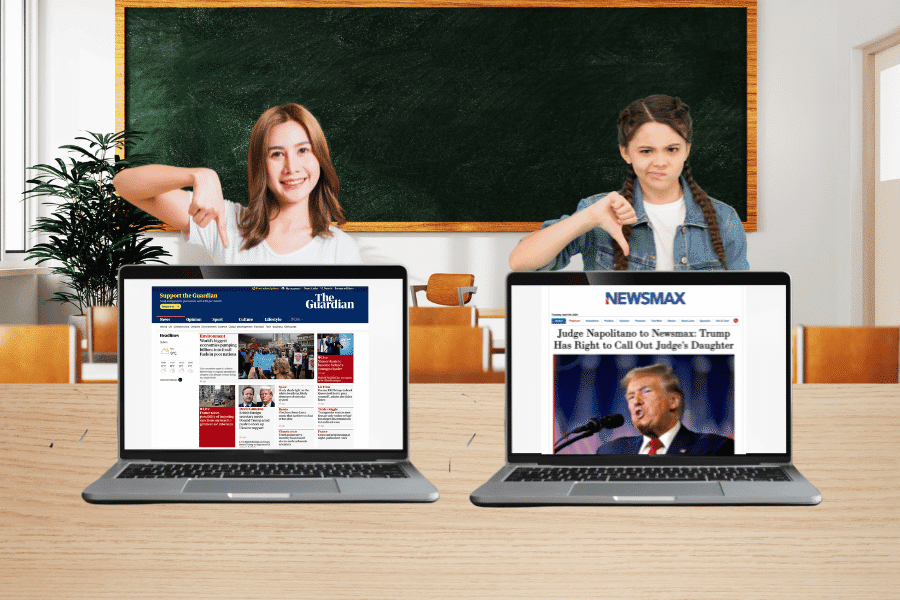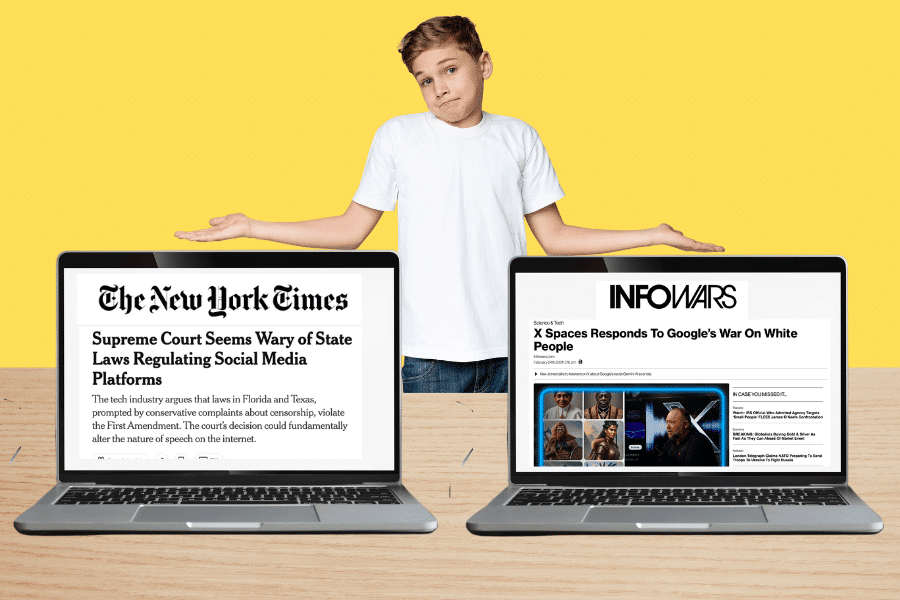
by Marcy Burstiner | 29 Nov 2024 | Journalism, Media Literacy, News Decoder Tips
Conspiracy theories are fun to argue about but they are dangerous ideas to spread. Here’s some ideas to help you avoid doing that. Two teens discuss conspiracy theories. (Illustration by News Decoder) In News Decoder’s Top Tips, we share advice for young...

by Aralynn Abare McMane | 11 Apr 2024 | Education, Educators' Catalog, Journalism, Media Literacy, News Decoder Updates
News and media literacy groups are calling on Europe to include journalism in media literacy education. Students need to know how to spot news they can trust. A teen points to a site that can be trusted while another gives a different site a thumbs down. Illustration...
Young people engage with the news in its many, diverse forms but they can’t always trust its reliability or may not verify sources. It is vital that young people be able to discern between real news and fake, verified trustworthy sources and polemic, propaganda or clickbait. In this piece, Aralynn Abare McMane talks to news and media literacy groups and explores why they are calling for Europe to include journalism in media literacy education.
Exercise: In order to better understand the wider issues surrounding media literacy, ask students to choose one of the organizations or projects mentioned in the article. They should undertake independent research into what they do. In groups, they can look into their chosen organization or project and prepare a short presentation summarizing what they do and the key issues they address. They should then reflect on why this organization exists, what problem it solves and how its objectives help students like them in the real world.

by Michael Leedom | 29 Feb 2024 | Education, Educators' Catalog, Media Literacy, University of Toronto Journalism Fellows
If a child is old enough to learn to read, it’s time to teach them to be media literate. But how to implement that in schools takes some problem solving skills. A teen shrugs at the difference between two computer screens. One shows an article by the New York...
Today’s students are digital natives, but are they digitally literate? In this Classroom #Decoder, guest writer Michael Leedom of the University of Toronto surveys media literacy curriculums around the globe, finding that media literacy education in Finland may be the world’s most robust.
Exercise: Read the article with your class, then have students try their hand at “lateral reading”. This is defined in the text as “checking the credibility of a claim by consulting other sources. Rather than remaining on a website with questionable information to find answers, known as ‘vertical reading’, students are taught to open a new tab and see if new information conflicts with what more trusted websites offer.” Present students with a web page and have them verify the credibility of that page by practicing lateral reading.



